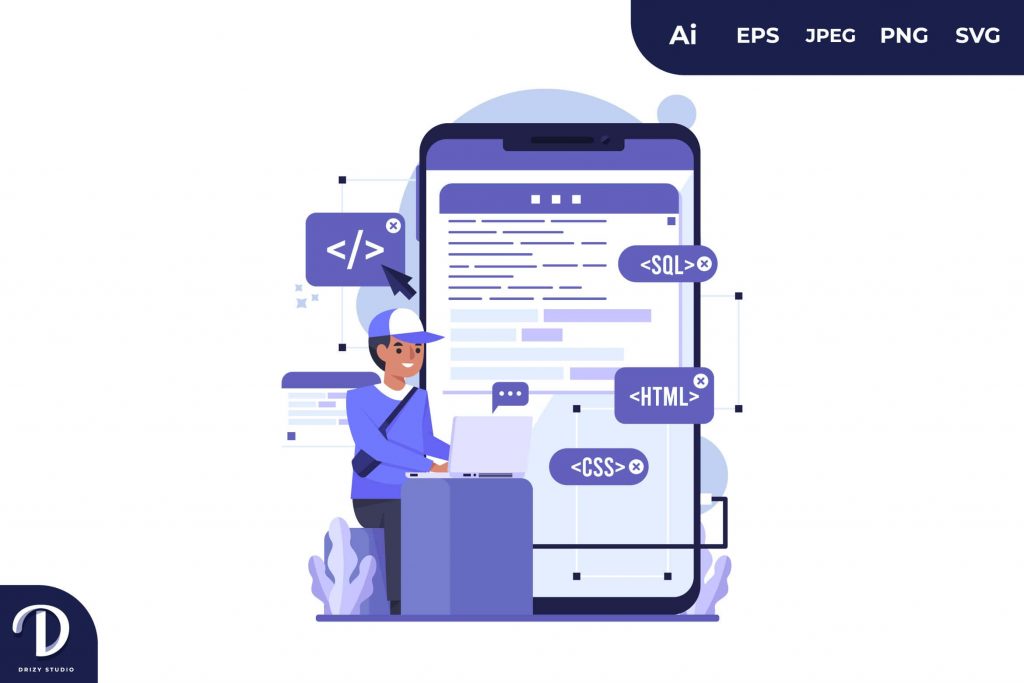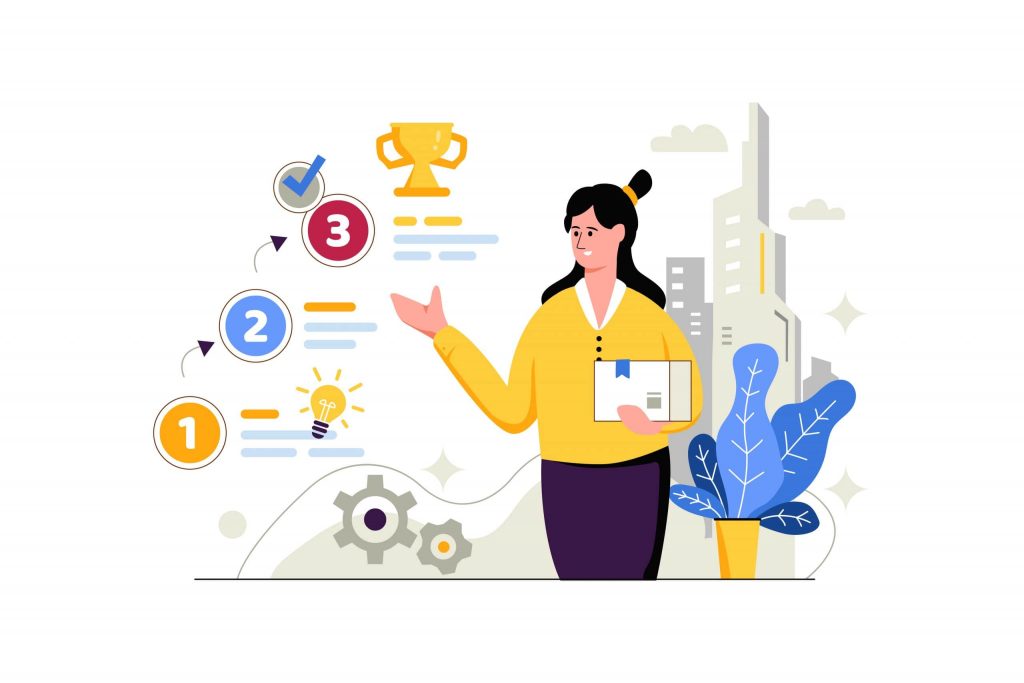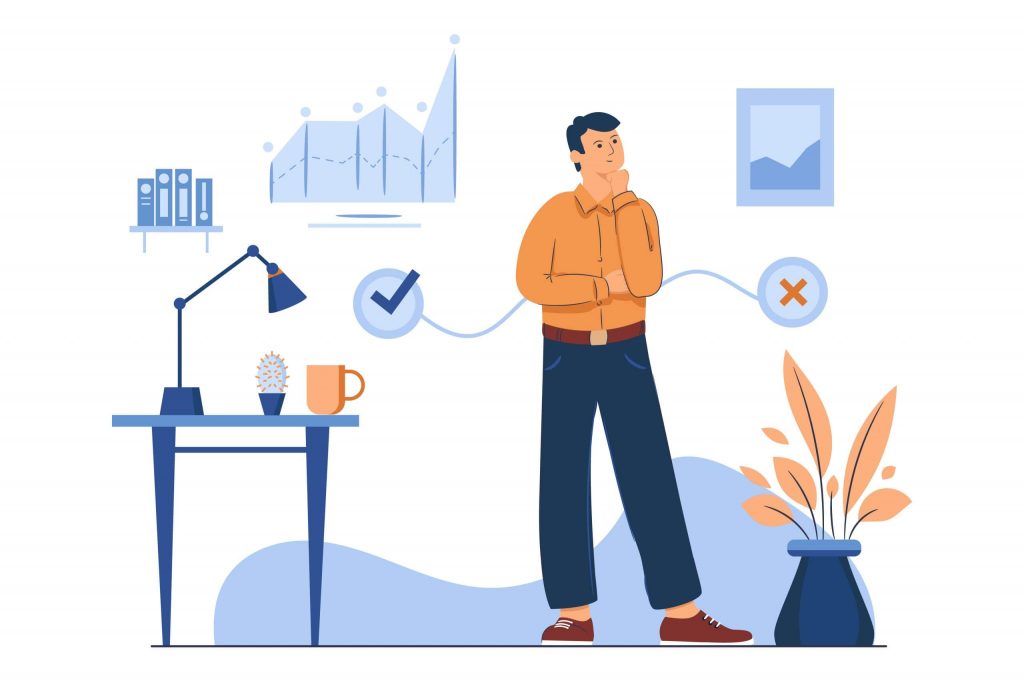
The product development cycle is a five-stage plan that involves taking a product from initial concept to final market launch. It typically includes several steps, such as idea generation, feasibility analysis, market research, product design and development, prototyping, testing, manufacturing and marketing. Each step in the cycle is important to ensuring a successful outcome. In this article you will learn how can adaptive product development cycles enable quick and continuous alignment with long-term organizational goals and market needs.
What is a product development cycle?
Product development cycles refer to the process that organizations use to bring new products to market. The cycle typically consists of four main phases: ideation, development, launch, and post-launch.
Ideation is the first phase of the product development cycle and is all about generating new ideas for products or services that could potential meet a customer need or want. During this phase, organizations will typically conduct market research to identify gaps in the marketplace that they could fill with their product.
Once an idea has been identified, it then moves into the development phase. This is where the product or service is actually created or developed. Organizations will work on designing, prototyping, and testing their product to make sure it meets all the necessary requirements and functions as intended.
The third phase of the product development cycle is launch. This is when the product or service is made available to consumers. Organizations will often do some final marketing and advertising leading up to the launch date to build excitement and generate interest in their product.
Finally, there is the post-launch phase. This is where organizations assess how well their product was received by consumers and make any necessary adjustments based on feedback. Additionally, they may also continue to support and promote their product after launch in order to keep sales strong.
The length of the product development cycle can vary depending on the complexity of the product and the amount of time required for testing. However, on average, the entire process takes between 6 and 12 months.
What is a product development lifecycle?
There are 5 product development lifecycle stages. Idea generation is the first step in the product development lifecycle. This is where new product ideas are generated. Ideas can come from anywhere – employees, customers, suppliers, competitors or even outside sources such as consultants or research firms. Once an idea has been generated, it must be evaluated to determine if it is feasible and worth pursuing.
Feasibility analysis involves assessing the technical feasibility of a new product idea. This includes assessing whether the necessary technology exists to create the product and whether it can be produced at a reasonable cost. Market research is also conducted at this stage to determine whether there is demand for the product.
If an idea passes the feasibility analysis stage, then product design and development can begin. This involves creating detailed specifications for the product and developing prototypes for testing. Testing is essential to ensure that the product meets customer needs and performs as expected. Manufacturing also needs to be considered at this stage, as products need to be manufactured in order to be brought to market.
Once a new product has been successfully developed and tested, it can then be launched onto the market through marketing activities such as advertising and promotion.

Product development cycle vs lifecycle
Most businesses have a product development cycle, which is the process by which new products are created and brought to market. However, some businesses also adopt a product lifecycle approach, in which they view their products as having a lifespan that goes beyond just the development cycle.
The key difference between these two approaches is that the product development cycle focuses solely on the creation of new products, while the product lifecycle approach takes into account the entire lifespan of a product, from conception to eventual retirement.
There are benefits and drawbacks to both approaches. The product development cycle is generally shorter and more agile, making it ideal for rapidly developing and launching new products. However, this approach can sometimes lead to sub-optimal product designs and insufficient customer research.
The product lifecycle approach is typically slower and more methodical, but it can result in better-designed products that better meet customer needs. Additionally, this approach can help businesses extend the life of their products and improve customer loyalty.
Product development cycles for a new product in 5 steps
1. Concept validation research
One of the key steps in this process is concept validation research. This step is important because it allows companies to test their product ideas with potential customers to ensure that they are interested in the product and would actually buy it.
Once an idea has been generated, it must be evaluated to determine if it is feasible and worthy of further exploration. This evaluation involves assessing the potential customer base, estimating market size, considering any legal or regulatory requirements, and assessing the technical feasibility of the proposed product or service.
This type of research can be conducted through surveys, interviews, focus groups, or even just informal conversations with people. It’s important to get feedback from a variety of different types of people, as this will give you the best chance of understanding how your product will be received by the general public. Concept validation research is an essential part of the product development lifecycle and can help you ensure that your new product is successful when it hits the market.
2. Development
If the idea passes this initial evaluation stage, it enters into concept development. During concept development, a more detailed business case is prepared to further assess the viability of the project. This business case includes information such as a more detailed definition of the target market, estimated sales volumes, expected profitability, proposed pricing strategy, and preliminary product specifications.
Once the concept has been developed and vetted internally, it moves into product development. This stage is focused on actually developing the product or service according to the specifications laid out in the previous stage. This process can be lengthy and involve multiple rounds of prototypes and testing before a final product is ready for launch into the market.
3. Usability research
Usability research is critical at every stage of the product development life cycle. By understanding the needs and wants of users, designers can create products that are not only functional but also appealing and user-friendly. Good usability research can help to improve the chances of success for a new product or service, and can also help to Identify areas where an existing product or service could be improved.
4. Usability testing
Usability testing is an important part of the product development life cycle. It allows businesses to assess how easy or difficult it is for users to interact with a product, and identify any potential areas of improvement. By carrying out usability testing at various stages of product development, businesses can ensure that their products are as user-friendly as possible before they launch them onto the market.
5. User experience design
User experience design is a critical component of the product development life cycle. By understanding the needs and expectations of users, UX designers are able to create products that offer a great user experience. A well-designed product will be easy to use, intuitive, and add value to the user’s life.
Good UX design can make a big difference in the success of a product. Poorly designed products can be frustrating to use and may even cause users to give up on them entirely. On the other hand, products with excellent UX design are more likely to be used and beloved by users.
Product development cycles for an existing product
The product development cycle for an existing product is the process of continual improvement that a company undergoes to bring new versions of an existing product to market. It involves taking the existing product and improving upon it in some way, whether that means adding new features, increasing performance, or improving quality. The goal is to keep the product competitive in the market and appealing to customers.
The product development cycle can be a lengthy and expensive process, but it’s necessary in order to keep a company’s existing product line competitive and up-to-date. By continually improving their products, companies can maintain their market share and appeal to customers who are looking for the latest and greatest offerings. Here are the steps to follow when developing an existing product.
- Modify Existing Products.
The first step in this process is to assess what users want and need from the product. This can be done through customer surveys, focus groups, or other research methods. Once the data has been gathered, it must be analyzed to determine what changes need to be made.
- Change Up Your Ideas.
Once the necessary changes have been identified, the development team can begin working on them. This usually involves coming up with new designs and prototypes, testing them, and then makingfinal adjustments before mass production begins. Throughout this process, it is important to remain flexible and open to change, as user feedback can alter the course of development at any time.
- Offer Product Trials.
Product development is all about creating new products and bringing them to market. But what do you do with an existing product? How do you keep it fresh and relevant? One way is to offer product trials.
Product trials let your customers try out a new product or service before they commit to buying it. This can be a great way to generate interest in an existing product and get feedback from your customers at the same time.
There are a few things to keep in mind when planning a product trial:
- Make sure the trial is relevant to your target market. Offering a trial of a new home cleaning service to busy moms, for example.
- Keep the trial period short – no more than two weeks. You don’t want customers to forget about the product or lose interest.
- Have a plan for what happens after the trial period ends. Will customers be able to purchase the product at a discounted rate? Will they be automatically signed up for a subscription? Let your customers know what to expect so there are no surprises.
Product trials can be a great way to breathe new life into an existing product. By offering customers the chance to try before they buy, you can generate interest, get valuable feedback, and make sure your product is still relevant and appealing to your target market
- Increase the Value of Your Product.
There are a number of ways to increase the value of your product. One way is to improve the quality of your product. This can be done by ensuring that your product meets or exceeds the expectations of your customers. Another way to increase the value of your product is to offer more features or benefits than your competitors. This can be done by adding new features or by improving existing ones. Finally, you can also increase the value of your product by offering it at a lower price than your competitors.
- Customization and Specialization.
New product development involves creating entirely new products. This might include developing a new concept or improving upon an existing one. It often requires substantial research and investment, as well as a great deal of risk. Existing product development, on the other hand, focuses on making improvements to existing products. This might involve adding new features, improving upon existing ones, or simply making the product more user-friendly.
Both customization and specialization can play a role in product development. Customization involves tailoring a product to the specific needs of a customer or group of customers. Specialization, on the other hand, is the process of creating a product that is unique and not easily replicated by competitors.
In many cases, both customization and specialization are necessary in order to create a successful product. By understanding the needs of their customers and developing a product that meets those needs, businesses can create a competitive advantage for themselves.
- Create Additional Products and Product Lines.
Product development can be a great way to expand your business and increase your profits. By creating new products or product lines, you can tap into new markets and reach new customers. This can help you grow your business and achieve long-term success.
There are many benefits to creating new products and product lines. By creating new products, you can increase your sales and revenues. This can help you expand your business and reach new markets. Additionally, product development can help you build a reputation for quality and innovation. This can attract new customers and lead to repeat business from existing customers.
Product development requires careful planning and execution. But the rewards can be significant. If you are considering pursuing product development for your business, consider the following benefits: increased sales, expanded market reach, improved reputation, and increased profits.
- Focus on Package Deals.
Package deals involve creating a variety of products that can be sold together at a discounted price. This not only benefits the customer by saving them money, but it also helps to boost sales and encourage customer loyalty. In order to successfully develop package deals, it is important to research the needs and wants of target customers and then create a product mix that will appeal to them. This takes time and effort, but it is worth it in the long run as it can help to build a successful business.
- Find New Market Spaces.
In order to find new market spaces for product development, businesses need to identify unmet needs and problems that they can solve. This requires looking beyond the current customer base and understanding what other groups of people might need or want. Once a business has identified a potential new market space, they need to assess whether there is enough demand to justify developing a new product or service.
This means considering factors such as the size of the target market, the level of competition, and the costs of reaching the target market. If a business decides that there is indeed potential in a new market space, they need to carefully plan their entry strategy. This includes everything from choosing the right product or service to designing an effective marketing campaign. With careful planning and execution, businesses can successfully enter new market spaces and find success with their product development efforts.

What you need to know when working with a development company
When working with a development company, it is important to consider a few key factors in order to ensure a successful project. First, you should be clear about the scope and objectives of the project. What exactly do you want the end result to be? Make sure that you communicate this clearly to the development company.
Next, you should consider the company’s experience and track record. How long have they been in business? What kind of projects have they worked on in the past? Do they have any relevant experience to your project? You want to make sure that you choose a company that has a good track record and won’t cut corners on your project.
Finally, you should also consider cost. Of course, you want to get the best value for your money. But beware of companies that are too cheap – this could mean that they’re cutting corners somewhere. Get pricing from a few different companies and compare them before making a final decision.
When working with a development company for product development or software engineering, it is important to understand the entire lifecycle of the product.
Ideation is the first phase of the cycle, where new ideas are generated. Design is the second phase, where those ideas are turned into tangible designs. Development is the third phase, where the designs are turned into functioning prototypes. Validation is the fourth and final phase, where the prototypes are tested to make sure they meet customer needs and expectations.
Each of these phases has its own set of deliverables and timelines that need to be met in order for the project to be successful. It is important to work closely with your development team to ensure that everyone is on the same page and that all deadlines are being met.
Reasons To Work With Us
We have a proven track record of success, and our product development team has 10 years experience and expertise to get the job done right. We’re also highly proactive when it comes to identifying potential problems and addressing them quickly. That’s why working with us is the smart choice for any company that wants to develop new products successfully.
From software ideation, to design, building, testing, deploying and maintenance, you can count on us to be a valuable partner. What’s more, you can freely choose your level of involvement.
Our standard is to send you weekly progress updates and monthly recaps, but we’re flexible to your needs. Alternatively, you can just outsource everything to us and forget about it. Focus only on company growth and scalability. Since we’re also Atlassian partners (one of the biggest tech giants in the World), we can implement their solutions for your business while developing your software too. Contact us for a personalized quote!